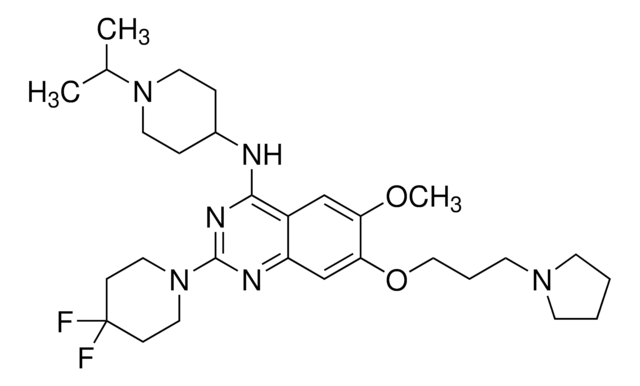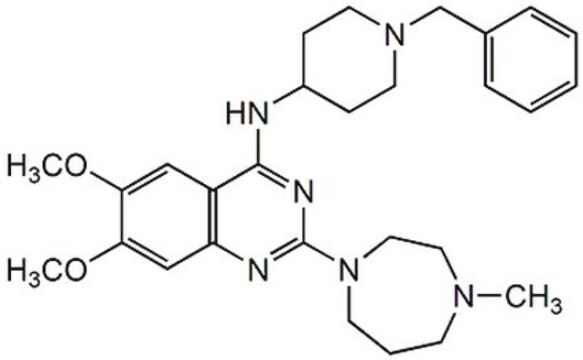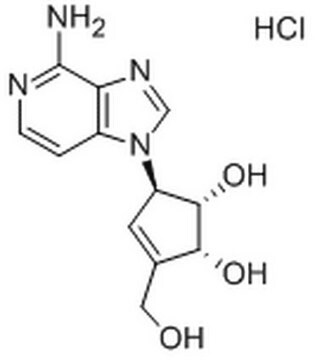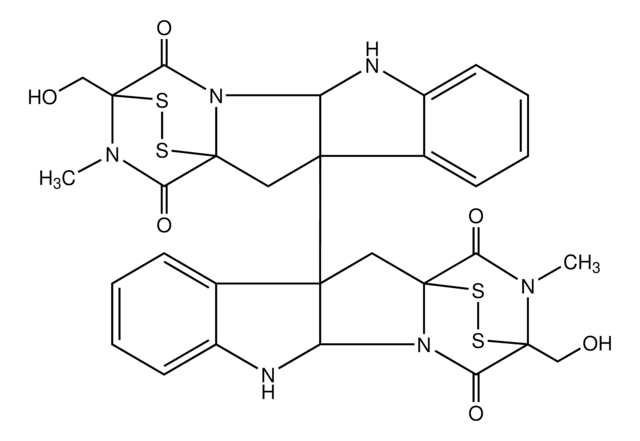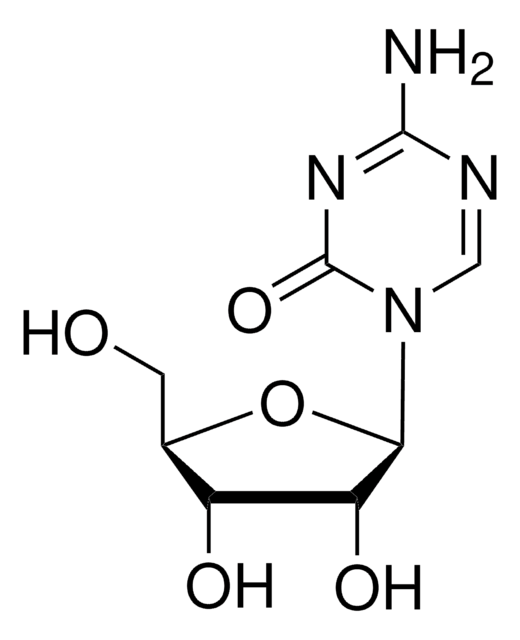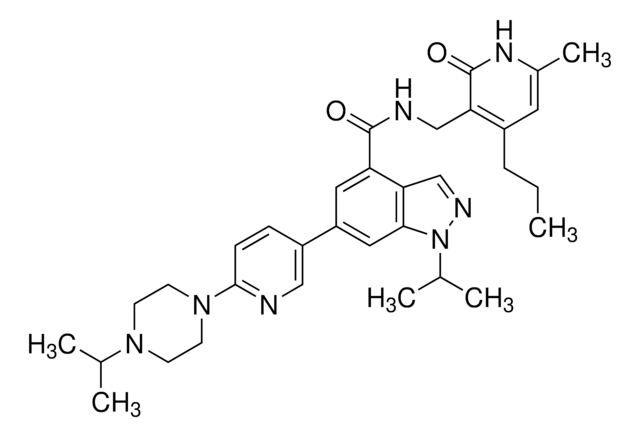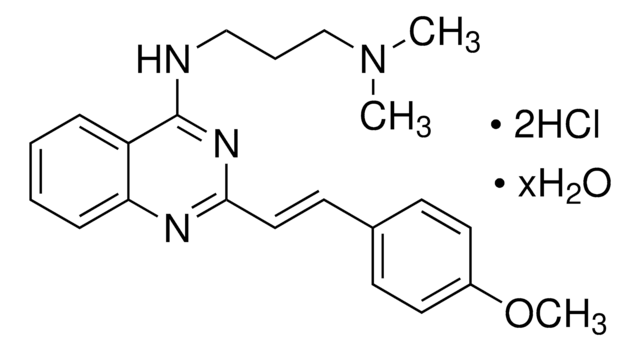Kluczowe dokumenty
B9311
BIX 01294 trihydrochloride hydrate
≥98% (HPLC), powder
Synonim(y):
2-(Hexahydro-4-methyl-1H-1,4-diazepin-1-yl)-6,7-dimethoxy-N-[1-(phenylmethyl)-4-piperidinyl]-4-quinazolinamine trihydrochloride hydrate, BIX 01294
About This Item
Polecane produkty
Poziom jakości
Próba
≥98% (HPLC)
Formularz
powder
warunki przechowywania
desiccated
kolor
white
rozpuszczalność
H2O: >20 mg/mL
temp. przechowywania
2-8°C
ciąg SMILES
N2(CCC(CC2)Nc3nc(nc5c3cc(c(c5)OC)OC)N4CCN(CCC4)C)Cc1ccccc1
InChI
1S/C28H38N6O2/c1-32-12-7-13-34(17-16-32)28-30-24-19-26(36-3)25(35-2)18-23(24)27(31-28)29-22-10-14-33(15-11-22)20-21-8-5-4-6-9-21/h4-6,8-9,18-19,22H,7,10-17,20H2,1-3H3,(H,29,30,31)
Klucz InChI
OSXFATOLZGZLSK-UHFFFAOYSA-N
Opis ogólny
Zastosowanie
- as a histone methylation inhibitor to treat E4 cells for analysing green fluorescent protein (d2EGFP) expression
- to investigate the role of G9a in neuroblastoma tumor growth
- as specific inhibitor of G9a to treat the SK-N-AS, BE(2)-C, SK-N-DZ, SK-N-F1, and SHEP1 neuroblastoma cell lines
Działania biochem./fizjol.
Cechy i korzyści
Inne uwagi
Kod klasy składowania
11 - Combustible Solids
Klasa zagrożenia wodnego (WGK)
WGK 3
Temperatura zapłonu (°F)
Not applicable
Temperatura zapłonu (°C)
Not applicable
Środki ochrony indywidualnej
Eyeshields, Gloves, type N95 (US)
Wybierz jedną z najnowszych wersji:
Masz już ten produkt?
Dokumenty związane z niedawno zakupionymi produktami zostały zamieszczone w Bibliotece dokumentów.
Klienci oglądali również te produkty
Produkty
Epigenetic modifications are thought to occur through two key interconnected processes—DNA methylation and the covalent modification of histones.
Nasz zespół naukowców ma doświadczenie we wszystkich obszarach badań, w tym w naukach przyrodniczych, materiałoznawstwie, syntezie chemicznej, chromatografii, analityce i wielu innych dziedzinach.
Skontaktuj się z zespołem ds. pomocy technicznej